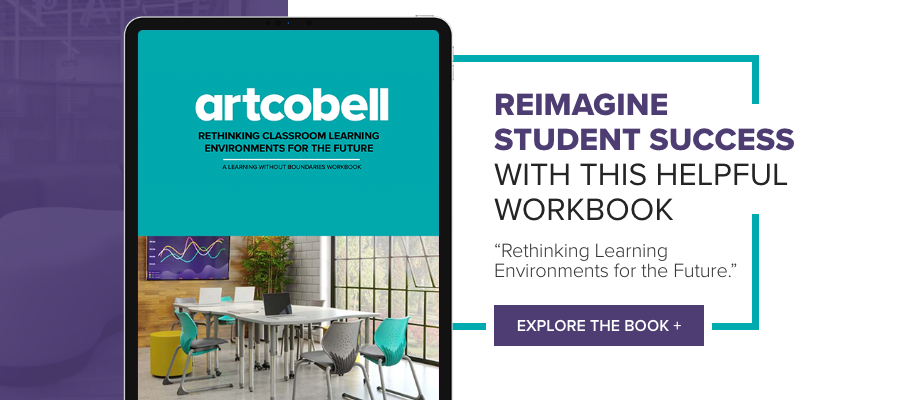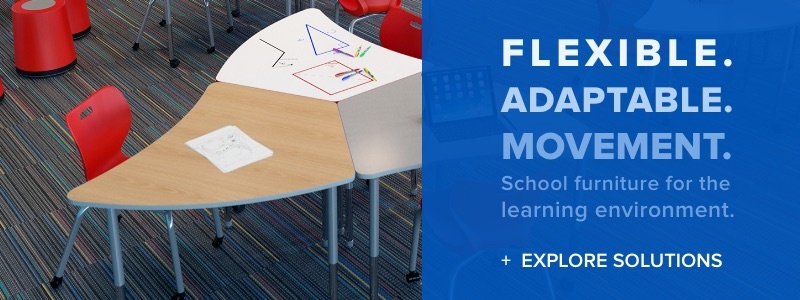Promote Emotional Processing with Effective Classroom Furniture
An important aspect of child development is the ability to understand emotions and how to process them. There are many reasons why students in America’s classrooms today feel stressed, anxious, and struggle with depression.
Data shows that the fast-paced and information-rich world we now live in—along with digital demands—has resulted in higher levels of isolation, loneliness, and misguided perceptions of self among our children and youth. It’s important that schools, community organizations, and involved adults realize this and take an active approach to support students in regulating their emotional processing.
Related Article: Promote Social Emotional Learning with Classroom Furniture & Setup
What is Emotional Processing & Why it Matters in Your Classroom
Essentially, emotional processing is the ability to identify how we are feeling, what impact it's having and then controlling how we respond to those feelings. This is important because a key part of helping students become aware of their own feelings and the feelings of others is to build activities into classroom learning that supports the emotional processing of students.
Activities that teach the balance of awareness, interpretation, expression, empathy, and perspective are opportunities to help students recognize and practice regulating their emotions. Using research-based teaching strategies with well-designed learning environments can help you create safe and secure learning spaces for your students to explore and learn about their emotional processing.
3 Tips for Creating a Safe Learning Environment Using Classroom Furniture
Focused journaling, drawing, or expressive art:
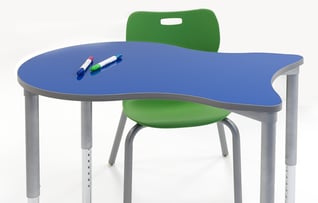 Give your students a quiet space for 5-10 minutes daily to write or draw about their thoughts and feelings. Allow them to choose where they will sit and where they want to work within your classroom setup to create the greatest sense of freedom.
Give your students a quiet space for 5-10 minutes daily to write or draw about their thoughts and feelings. Allow them to choose where they will sit and where they want to work within your classroom setup to create the greatest sense of freedom.
This encourages the development of your students’ emotional processing.
For example, a student may feel most comfortable in:
- a quiet nook under a student desk
- under a large table
- in a “secret space” behind a mobile bookcase
- on floor-seated tables
Regardless, it’s important your classroom provides students with both hard and soft and large and small seating options that engage them in the right way.
Mindful breathing:
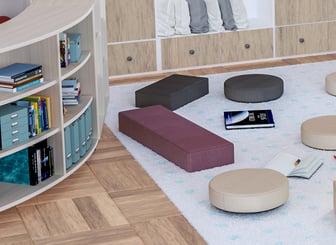 Encourage your students to be mindful of their breathing patterns. Teach them what mindful breathing is and create space in your schedule to practice mindful breathing exercises.
Encourage your students to be mindful of their breathing patterns. Teach them what mindful breathing is and create space in your schedule to practice mindful breathing exercises.
For example, give your students a few minutes before starting an important assignment, performing a speech, or completing a major test.
Typically, these are times when students can experience the most stress and anxiety during their school day. In order to create a safe learning environment, you should have available soft seating, rocking chairs, or movement stools that can provide a comfortable place for students to do some deep breathing exercises and once again, learn to regulate their emotional processing.
Develop self-regulation:
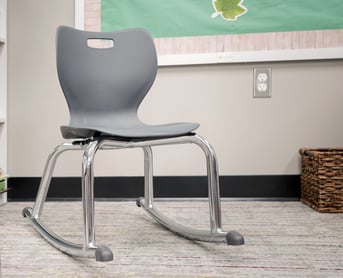 When students become distracted or are in need of a break, allow them time for focused movement. Bilateral movement—crossing the mid-line of the body—allows the brain’s right hemisphere and the left hemisphere to communicate in a way that helps students take a much-needed breather.
When students become distracted or are in need of a break, allow them time for focused movement. Bilateral movement—crossing the mid-line of the body—allows the brain’s right hemisphere and the left hemisphere to communicate in a way that helps students take a much-needed breather.
Make sure you have standing height desks, rocking chairs, or movement stools readily available as an option for your students who need to move.
As you can see, an effective classroom setup is made up of diverse types of classroom furniture, which can help you to create a safe learning environment for your students. As you design your classroom layout, never underestimate the value of arranging your furniture in a way that encourages emotional processing.
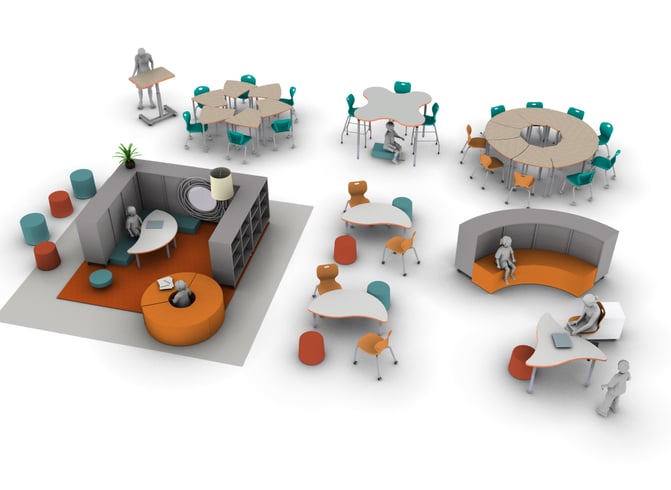
Thanks to Nancy Sykes, MA, Licensed Professional Counselor for her contributions to this article. Sykes has 25+ years’ experience working in education. Her education career began as a sign language interpreter for Deaf and hard-of-hearing high school students in Mesquite, Texas. She later taught special education in a discipline alternative education program with middle and high school students. Fifteen years ago she moved to Central Texas and taught in a Regional Day School Program for the Deaf. Sykes is currently working as an elementary school counselor. She also counsels children and adults part-time through her private practice.
Sources:
Cherry, Kendra. “Emotions and Types of Emotional Responses.” Verywell Mind, 2 Aug. 2013, www.verywellmind.com/what-are-emotions-2795178.
Dorrance Hall, Elizabeth. “Mindful Listening.” Psychology Today, 2017, www.psychologytoday.com/us/blog/conscious-communication/201703/mindful-listening.
Jones, Stephanie, et al. Navigating SEL from the Inside Out: Looking Inside & Across 25 Leading SEL Programs: A Practical Resource for Schools and OST Providers (Elementary School Focus). 2017.
Recent Posts
In part one of our series on thoughtful classroom design, we heard an educator’s perspective on...
In part one of our series on thoughtful classroom design, we heard an educator’s perspective on...
